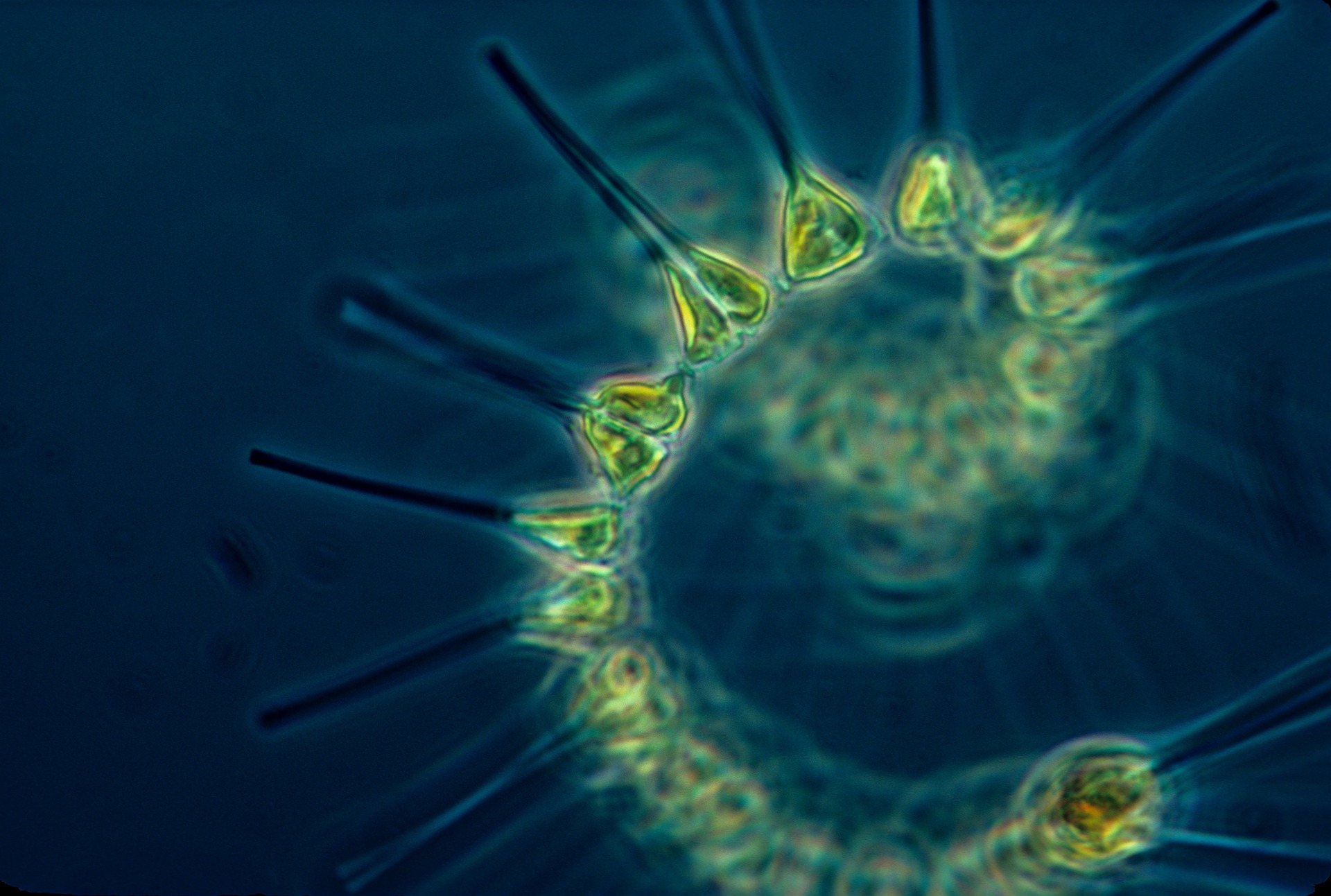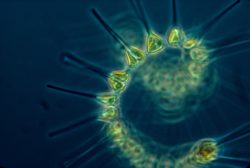
The Amazing World of Plankton

When asked what lives in the ocean we might think of animals like coral, whales, fish, or turtles, and might forget about the microscopic plants and animals that are the foundation of marine food webs. These are known as plankton, the plants and animals that drift along with the sea’s tides and currents and there are two different kinds: phytoplankton and zooplankton. Fun fact: they can move up and down in the water column, but not side to side.
Phytoplankton are tiny (usually single-celled) plants that produce their own food through photosynthesis at the ocean’s surface (to maximize their exposure to sunlight). Through photosynthesis, phytoplankton produce much of the oxygen we breathe. These tiny plants provide the foundation for aquatic food webs and include species of algae, like diatoms and dinoflagellates. Not all phytoplankton are harmless though! Several species of dinoflagellates are the cause of dangerous red tides that are harmful to marine mammals and humans.
Zooplankton are weak-swimming animals that spend part or all of their lives at the mercy of currents. Haloplankton spend their whole lives floating through the ocean while meroplankton spend part of their lives in this state and eventually become animals — like worms, crustaceans, arthropods, fish, or insects — that are able to swim freely. Zooplankton are also classified by size, from nanoplankton (the smallest) to megaplankton (the largest).
This huge class of animals include tiny krill that feed some of the world’s largest animals, jellyfish, and even sunfish — the largest bonefish in the world!
A delicate balance
Plankton are hugely important to healthy marine ecosystems, no matter how small each organism may be. However, runoff from fertilizers and other nutrient-rich products we use on land can send phytoplankton into a growth frenzy and throw these delicate ecosystems out of balance, leading to phenomena like red tide and blue-green algal blooms that are harmful to animals, our pets, and even us! No matter where you live, you can contribute to ocean conservation by reducing or eliminating your use of fertilizers in your yard and garden.
